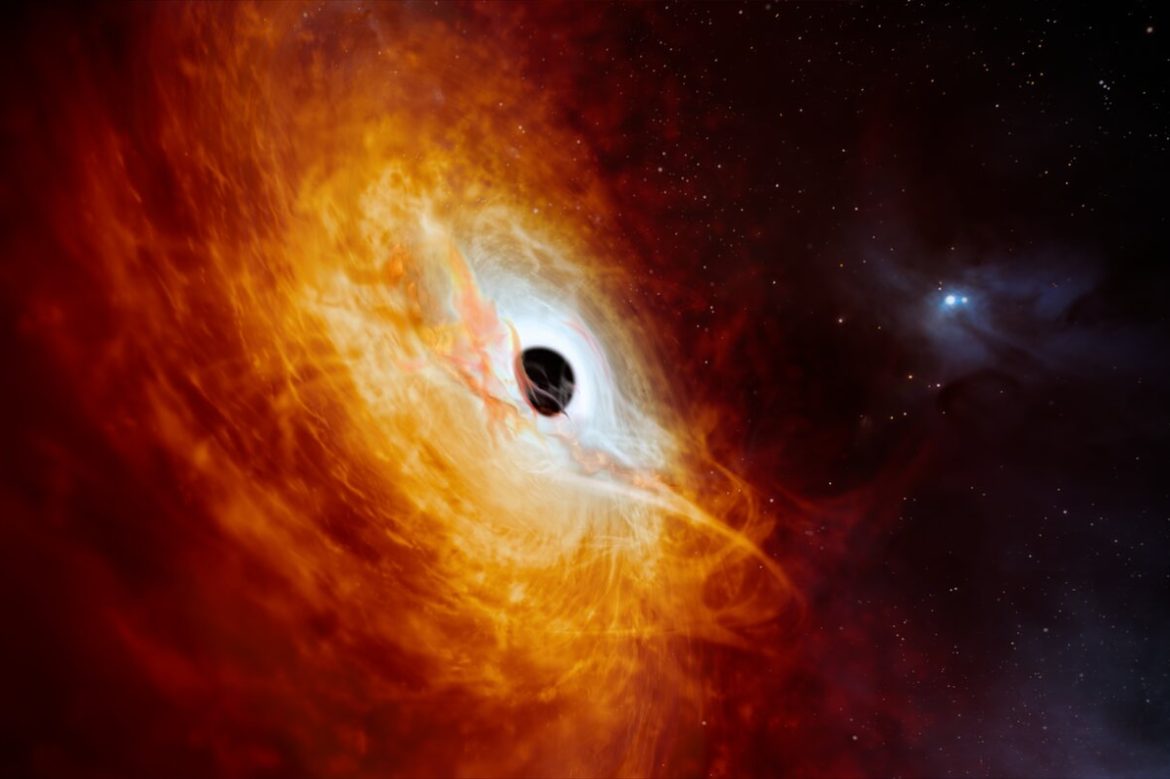
Consumes 1 Sun Per Day: The Brightest Object Discovered
Observations conducted by the Very Large Telescope (VLT) at the European Southern Observatory (ESO) have stirred excitement within the astronomical community. The newly identified quasar, designated J0529-4351, not only stands out as the brightest of its kind but also holds the distinction of being the brightest object ever in the observed universe.
Quasars, short for “quasi-stellar radio sources,” are intensely luminous objects situated at the cores of distant galaxies, powered by supermassive black holes. These black holes voraciously consume surrounding matter, emitting vast amounts of light in the process. Some quasars rank among the brightest entities in the sky, making even the most distant ones visible from Earth. Typically, the brightest quasars signify the presence of the fastest-growing supermassive black holes.
J0529-4351 represents the fastest-growing black hole ever identified. Boasting a mass 17 billion times that of the Sun, this remarkable entity accrues matter equal to the mass of one Sun every day, rendering it the brightest object to date in the known universe.
Situated 13 billion light-years away from Earth, J0529-4351 shines approximately 500 trillion times brighter than the Sun! This extraordinary luminosity emanates from an accretion disk spanning 7 light-years.
What’s particularly striking is that despite being recorded approximately 40 years ago, this celestial phenomenon remained unrecognised as a quasar until now, owing to its extreme brilliance.
Detecting quasars requires meticulous observation of vast portions of the skies. The resulting datasets often prove immense, prompting researchers to employ machine learning models for analysis and to differentiate quasar from other celestial bodies. However, as these models have been trained on existing data, they may misclassify exceptionally bright candidates, likening them to familiar objects rather than recognizing them as quasars. Last year, automatic analysis of data from the European Space Agency’s Gaia satellite initially labelled J0529-4351 as a star due to its excessive brightness. Its true identity as a distant quasar was only discerned through observations conducted with the ANU 2.3-metre telescope at Australia’s Siding Spring Observatory. However, identifying it as the brightest quasar ever recorded necessitated measurements utilizing a larger telescope equipped with a more sensitive instrument. This data was provided by the X-shooter spectrograph mounted on ESO’s VLT in Chile’s Atacama Desert.
The discovery of J0529-4351 stands as a significant milestone, promising fresh insights into black hole evolution, galaxy formation, and the enigmatic early universe. Furthermore, the luminosity and dimensions of this quasar hold the potential to yield novel revelations concerning the fundamental laws of physics during the universe’s infancy.
REFERENCES
- 1. https://www.eso.org/public/news/eso2402/
- 2. https://www.space.com/brightest-quasar-ever-powered-black-hole-solar-mass-accretion-disk
